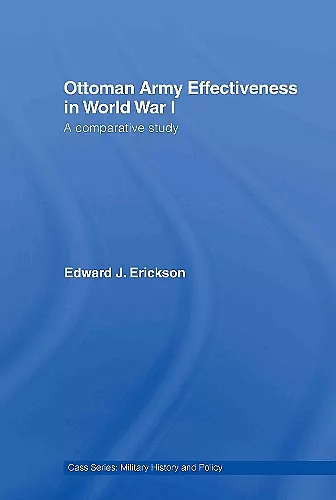Ottoman Army Effectiveness in World War I
A Comparative Study
Format:Hardback
Publisher:Taylor & Francis Ltd
Published:1st Feb '07
Currently unavailable, and unfortunately no date known when it will be back
This hardback is available in another edition too:
- Paperback£55.99(9780415762144)

This volume examines how the Ottoman Army was able to evolve and maintain a high level of overall combat effectiveness despite the primitive nature of the Ottoman State during the First World War.
Structured around four case studies, at the operational and tactical level, of campaigns involving the Ottoman Empire and the British Empire: Gallipoli in 1915, Kut in 1916, Third Gaza-Beersheba in 1917, and Megiddo in 1918. For each of these campaigns, particular emphasis is placed on examining specific elements of combat effectiveness and how they affected that particular battle.
The prevalent historiography attributes Ottoman battlefield success primarily to external factors - such as the presence of German generals and staff officers; climate, weather and terrain that adversely affected allied operations; allied bumbling and amateurish operations; and inadequate allied intelligence. By contrast, Edward J. Erickson argues that the Ottoman Army was successful due to internal factors, such as its organizational architecture, a hardened cadre of experienced combat leaders, its ability to organize itself for combat, and its application of the German style of war.
Ottoman Army Effectiveness in World War I will be of great interest to students of the First World War, military history and strategic studies in general.
'...serves as an introduction to the Ottoman army campaigns in the First World War for an audience unable to use Turkish material.'Kate Fleet, The University of Cambridge, UK
ISBN: 9780415770996
Dimensions: unknown
Weight: 630g
256 pages